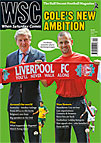 A cautionary tale of foiled ambition, financial crisis and battles with several authorities. Gary Andrews explains where it all went wrong
A cautionary tale of foiled ambition, financial crisis and battles with several authorities. Gary Andrews explains where it all went wrong
Plenty of non-League clubs have gone from play-off contenders to penniless relegation fodder in recent years, but Grays Athletic are one of the most extreme cases. Four years ago they came close to promotion to the Football League with one of the best Conference teams of the past decade. But what followed was a mix of managerial instability, stadium issues and, ultimately, near-extinction.
Without a league to play in at the start of June, Julian Dicks’s team will start the season in the Isthmian Division One North, a huge fall from the Conference, where they finished bottom last season (after Chester’s record was expunged). What’s left is a shattered husk of the club that brashly stormed non-League’s top flight in 2005.
At the heart of Grays’ rise and fall is departing chairman Mick Woodward, who arrived at the New Rec in 2000 with money to burn. After an aborted attempt to buy Peterborough United in 2003, Woodward set about assembling an exceptional squad under then manager Mark Stimson.
A new team didn’t come cheap but it was packed with young players, many of whom had been discarded elsewhere. Stimson’s eye for young talent was impressive and, between 2004 and 2006, Grays fielded plenty of familiar names to Football League fans today. Freddie Eastwood, with 34 goals in 55 games, had already departed for Southend by the time Grays were promoted to the Conference, but Stimson’s charges for an assault on the League included Celtic’s latest signing Gary Hooper, Wolves star Michael Kightly plus Aaron McClean, John Nutter, Dennis Oli and Glenn Poole. They were, quite simply, too good for the division and stormed into an early lead with a 15-game unbeaten run.
But the challenge faded and Accrington Stanley ended up winning the division, with Grays in third, before unexpectedly going down 5-4 to Halifax in the play-off semi-finals. And that was the beginning of the end. Stimson moved to Stevenage and Grays’ squad began to break up as players moved higher up the pyramid.
With no Stimson and, crucially, no place in the Football League, Woodward scaled back. Frank Gray was appointed but sacked midway through the season with Woodward himself replacing him, despite having no managerial experience. “Why pay someone else to run the club while I can do it,” was his reasoning. Despite stepping aside as manager a few weeks later, Woodward clearly had a taste for the job and appointed himself to the hotseat on two further occasions. By the time former West Ham and Liverpool defender Dicks took charge last season, Woodward had burned through six managers in two years, not including his own stints.
Grays started to lurch down the table with their owner cutting an ever more divisive figure, frequently claiming he’d been abused by an increasingly disillusioned set of fans and threatening to withdraw his investment. But it was Woodward’s fight with Thurrock Council that proved most damaging. The 20-year lease on the Bridge Road site was due to end in 2010 and Woodward proposed building a new ground nine miles away. But both supporters and the local council were opposed to the move and a new stadium never appeared. The 104-year-old New Rec was sold for housing at the end of last season leaving Grays homeless.
As the club also faced a winding up order from the taxman, new chief executive Andy Swallow decided that Grays could not afford a suitable groundshare and opted to resign from the Conference South and apply to the Isthmian League. The FA then took this to mean the team were resigning from all football and when the rejigged non-League pyramid was released, Grays were nowhere to be seen. Swallow and his team appealed and were initially placed as a 23rd team in the Ryman Premier, only to be thrown out over concerns from the league that their proposed groundshare with East Thurrock wasn’t binding. Another appeal was swiftly convened and, against the league’s wishes, Grays were placed in the Isthmian Division One North as a compromise. They’ll now face fixtures against the like of Maldon & Tiptree and Needham Market.
Woodward, meanwhile, went quietly, for once, handing over his shares to Swallow at the end of June. It’s hard to say if Grays’ demise would have been as swift and brutal if his money had taken them into the League, but his tale is the perfect microcosm of a non-League chairman. There was no malice, just a mixture of a large ego and a slowly diminishing enthusiasm for the game. For the first time in ten years, Woodward is without a club. Grays fans nearly ended up in the same position.
From WSC 283 September 2010